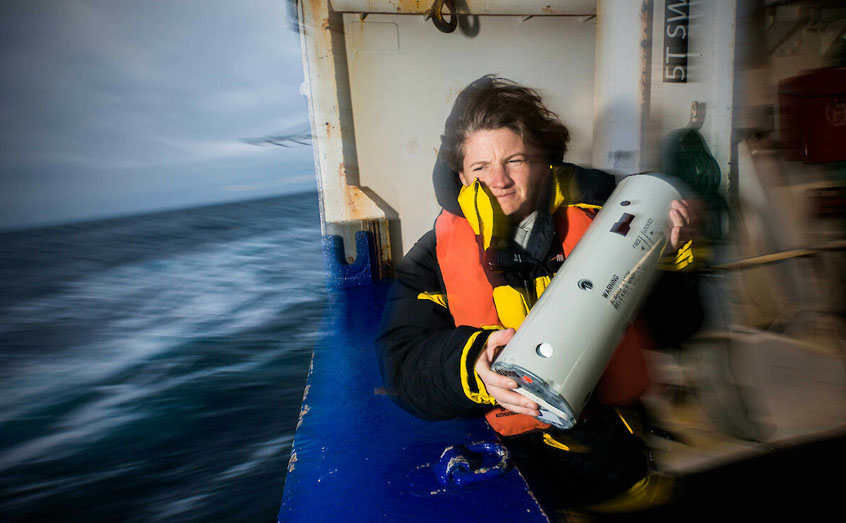SAMS news room
Whale-spotting scientists chart blue whale behaviours

Video and photography have revealed tantalising glimpses into the lives of Antarctic blue whales and spurred the development of automated ways to detect these critically endangered ocean giants.
The research, led by scientists from SAMS, the Australian Antarctic Division and National Oceanic and Atmospheric Administration, measured the movement and behaviour of Antarctic blue whales in fine detail.
This included dive times, blow rates, swim speeds and broadscale movements, using ‘photogrammetric’ (video-based) tracking and photo-identification.
The team, including SAMS Fellow Susannah Calderan, surveyed locations off East Antarctica, between the Dumont D’Urville Sea and the Ross Sea, during three voyages in 2013, 2015 and 2019.
The 2013 voyage was the first time they had used passive acoustic instruments to find Antarctic blue whales by listening for their sounds. The instruments allowed the scientists to detect and track these rare and elusive animals from hundreds of kilometres away and get close enough to study them in fine detail. Once the team spotted a blue whale or a group of whales, their ship remained at a distance while they videoed the animals, typically for an hour at a time.
Ms Calderan said: “We wanted to gain as much understanding as possible about the behaviour of the whales in their natural state, before we moved close enough to take photos for identification.
“By measuring them very precisely we’re able to get an indication of whether animals are feeding or just moving through the area, and pick up patterns of movement and behaviour.”
The video tracking data allowed the team to measure the precise location of the whales each time they surfaced, how often they took a breath (blow rates), how fast they swam and where they went.
The whales’ dive behaviour comprised a sequence of short dives averaging 17.6 seconds each, followed by a long dive of, on average, three minutes. Blow rates showed the animals breathe about 60 times an hour.
The whales’ average swimming speeds varied between about 3.2km/hr and 6.6 km/hr, with the fastest speed detected at almost 15 km/hr. These were considerably faster than speeds measured in other blue whale populations in New Zealand, Sri Lank and California.
The video dataset collected on the three voyages is now being used to develop artificial intelligence (AI) to detect whales at sea during noisy operations, such as offshore oil and gas surveys and wind-farm construction.
The AI will reside within camera systems mounted on ships that can scan a 360-degree view of the ocean and detect blows from whales during the day and night.
The research team said the study illustrates the benefits of applying technology in innovative ways, to learn more about an animal that has proved difficult to find and study using survey and sighting techniques that work well with other whales and species.
The research is published in Frontiers in Marine Science.
